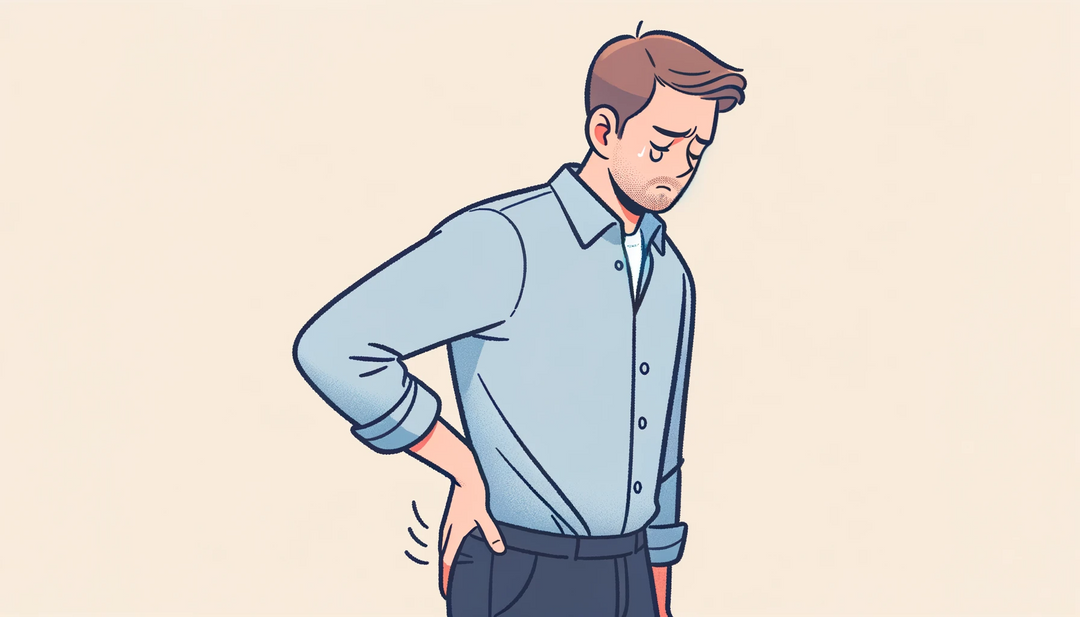Common Causes of Back Pain When Working From Home

While ideal in our current situation, working from home comes with a few drawbacks. Not all of our homes are set up and equipped with ergonomic furniture that modern offices have, such as ergonomic desks, chairs, and keyboards. And now that most of us spend over a third of our days slouched in front of our computers, developing persistent pain is a very real risk you need to be aware of how it develops. The back is particularly vulnerable to this kind of pain and it’s commonly felt in these areas:
Lower back pain (#sittingdisease)

Most of us are familiar with the occasional lower back pain. But if you have to live with it every day, that’s when it becomes a pesky problem. It’s actually one of the most common disabilities among workers and it’s a condition that comes with a hefty price tag. In fact, Corporate Wellness Magazine reported that it costs an additional 60% in healthcare for employees with this type of pain. As it turns out, it’s not just another sign of aging but there are other factors involved, too. These include obesity, mental health problems, sedentary lifestyles, and, of course, poor posture.
It’s no surprise that lower back pain is becoming an epidemic. We spend hours sitting in front of computers. Surely, that doesn’t do our spine any favors! Sitting for long periods of time puts too much pressure on the lumbar region, especially if you’re not maintaining the natural curvature of the spine (hint: it’s not straight).
Middle and upper back pain
Working out is usually the culprit of mid-back pain due to overuse or muscle strains. But even if they don’t exercise regularly, everyday workers still feel debilitating shoulder pain.
When you spend too many desk-bound hours, the common tendency is to lean forward. Slouching can result in mid to upper back pain. Stress doesn’t help either because it increases the risk of musculoskeletal pain, particularly in the upper back. When you’re feeling a lot of pressure, notice how your shoulders tend to bunch up. If this habit persists, tension can build around the shoulders and result in chronic pain.
Neck pain (#techneck)

If your computer isn’t at eye level, the natural tendency is to hunch your neck over. Again, it can lead to postural pain for the neck. But poor posture is not the whole story behind persistent neck pain. Research cited by physiotherapy lecturer, Christian Worsfold, suggests that lifestyle factors are more important in alleviating neck pain. Getting enough sleep and exercise can be extremely helpful in avoiding neck pain.
How to manage back pain
Alleviating or preventing back pain requires changing your work from home habits. Start by investing in ergonomic furniture as they can encourage you to be mindful of your habits.

For instance, rather than a traditional chair, consider the LeanRite standing chair for your home office needs. It promotes perching instead of sitting or standing in front of your work desk. Researchers have found that this posture, where the pelvis is tilted slightly forward, keeps the spine in a neutral position. It also engages the core muscles which are crucial in supporting the spine. Like traditional office chairs, you can also adjust the height of your seat when you perch. This is important, as Pain Free Working highlights that the feet need to touch the ground. This reduces the stress on your thighs and keeps your spine stable and supported.
But making sure your posture is fixed is not the only thing you can do for spine health. You also need to evaluate your lifestyle habits. Take a brisk walk, try a quick yoga class, or do resistance training. There are a couple of exercises you can do to target back muscles specifically. NBC News suggests adding body-weight movements like Supermans into your routine. More importantly, take frequent breaks during your workday and make sure to maintain a good amount of physical activity.
Article special contribution to ergoimpact.com
Contributed by: JBonham






Leave a comment